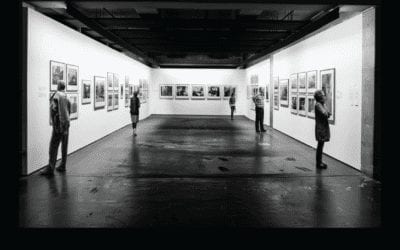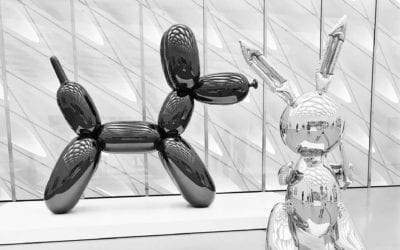12 Steps to Appreciating Art
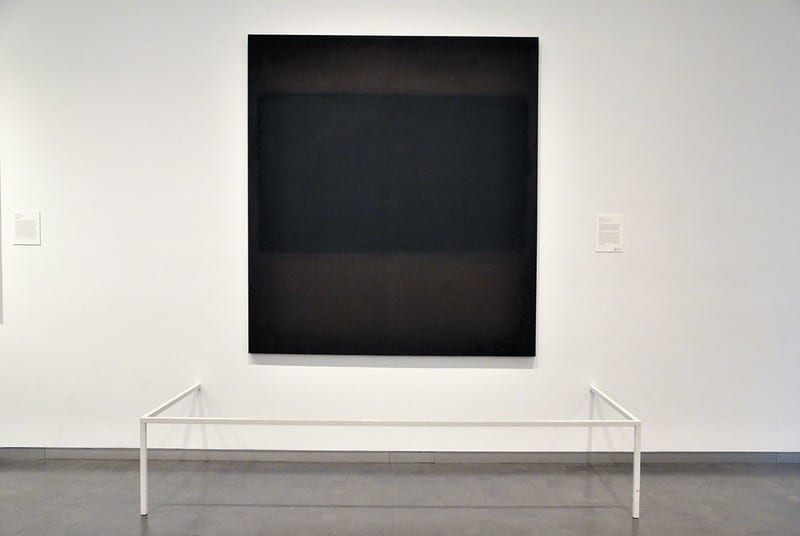
Untitled No. 11, 1963 by Mark Rothko – Image Courtesy of Flickr / CC BY-NC-ND 2.0
The Power of Opinion
The key to balancing subjectivity and judgment is our opinion. Opinions are interesting. They are unique to each of us yet we always have a reason for them. Appreciating art is the same. Our thoughts on it are our own and built on our own reasoning.
But art is ominously diverse from classical portraits to disturbing videos. How can we possibly form opinions on all of it?
“The idea that artists represent the vanguard of the future, and that it is we and not they who will look funny if we fail to appreciate them, has taken hold at least of a large minority.” – E.H. Gombrich
Start with Preparation
1) Learn a little about the world.
Art is influenced by society. Taking a few minutes to learn about the culture and events that influenced it can quickly help us notice symbolism, relevant subject matter, or innovative styles.
2) Check out the artist.
Every artist has their own techniques and aspirations. Reading an artist’s bio at an exhibit or googling their past work is an easy way to understand their style and interpret their art.
3) Know your taste.
All art isn’t for all people. Often a piece doesn’t “speak to us,” and we question if its greatness is over our heads. Well, perhaps we don’t like it. And that’s okay. If we spend enough time venturing through the art world, we’ll soon find our personal taste.
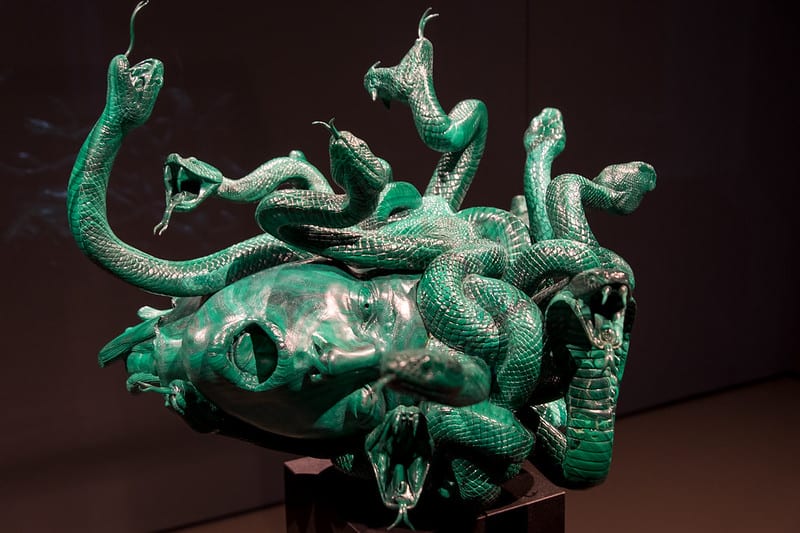
The Severed Head of Medusa by Damien Hirst – Image Courtesy of Flickr / CC BY-NC 2.0
See It for Yourself
4) Be open-minded.
Be careful not to enter the art world with a preconceived notion of what art is or is not. Once upon a time, there were strict guidelines on what was considered art. Not anymore. Today, artists are pushing the boundaries on the meaning and purpose of art. All of which are incredible in their own right.
5) Be patient.
The most common mistake we make is treating exhibits like Instagram and scrolling through. While some pieces move us instantly; others take time to resonate. Give each piece 30 seconds. If it grabs you stay awhile, if not scroll to the next.
6) Stop thinking.
While analyzing and assessing art can be fun, most art isn’t meant to be assessed. It’s meant to be viewed and felt. Frankly, thinking ruins the experience and ironically causes us to miss the point. Calm your thoughts, let your eyes wander, and allow the feelings to flow.
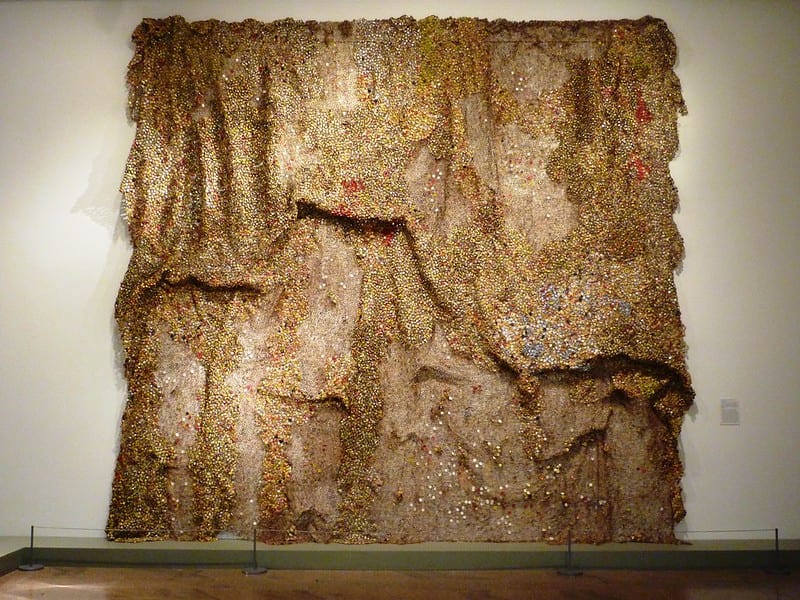
Dusasa II by El Anatsui – Image Courtesy of Flickr / CC BY 2.0
Form Your Opinion.
7) Try a brainstorm.
A quick brain dump can help us gather our thoughts. Write down a few words or phrases that come to your mind when you look at a piece. You can write feelings, adjectives, observations, symbolic references, etc. This results in a collection of words that will be confusing to others but make perfect sense to you.
8) Evaluate the basics.
Look at the artist’s use of color, material, balance, tension, rhythm, and texture. Consciously thinking through these elements help us pick apart a piece.
9) Consider the process.
Many times, a piece doesn’t seem spectacular until you recognize the techniques and effort it took to create it. Furthermore, many pieces were made with experimental or uncommon techniques that show an artist’s innovation.
10) Ask “What’s the point?”
If you’ve gone through all the other steps, now is the time to ask, “What’s the point of this piece?”. Getting an idea of the goal gives a loose criterion to judge it against. Is it a political message? Is it meant to shock us? Is it to meant show the artist’s ability to capture reality? Moreover, a piece can have a range of goals – with many that are hard to put into words.
11) Ask “What if…?”
With the goal in mind, imagine the countless decisions made by the artist. Decide if those decisions help or hurt the goal. We do this by asking “What if…?” What if they used red instead of green? What if they didn’t distort the picture? What if they used a matte material instead of a shiny one? This exercise allows us to determine if the decisions, and therefore the piece, is great.
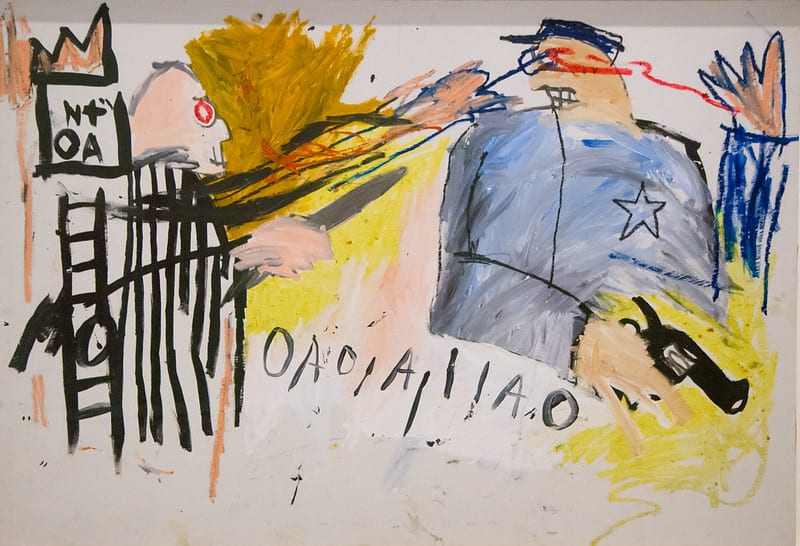
Untitled (Sheriff) by Jean-Michel Basquiat – Image Courtesy of Flickr / CC BY-NC-ND 2.0
The Final Step
12) Be confident.
There are no right or wrong answers with art. The worst thing you can do is doubt yourself. Once you form an opinion be confident in it.
Our Civic Duty
In art, opinions do a lot for us. It allows us to wrap our heads around it. And as influencers of art, it’s our duty to have opinions. The artworld is built off our collective thoughts. We said art shouldn’t depict reality; it gave us abstract. We said art should stand for something; it gave us social commentary.
We provide the balance of subjectivity and judgment art needs to progress. Subjectivity provides freedom. Judgment gives direction. Therefore, next time you visit a gallery don’t ask what art can do for you – ask what you can do for art.
As I can,
ss
The Psychology of Interpretation
The Psychology of InterpretationSpace Program: Mars by Tom Sachs - Courtesy of Dave Pinter / CC BY-NC-ND 2.0Reliving Our PastAround 1917, psychologist Frederic Bartlett asked a group of participants to read and recite an unusual folk story, The War of the Ghosts...
How We Meet Black America
How We Meet Black AmericaRumors of War by Kehinde Wiley - Courtesy of Brecht Bug / CC BY-NC-ND 2.0Have we met before?In 2020, nearly everyone has an impression of Black America – good, bad, or indifferent. However, 40% of White Americans don’t have a single friend...
Retail vs. Fine Art: Do We Know the Difference?
Retail vs. Fine Art: Do We Know the Difference?Butterfly Knight by Oliver GalSelling vs. CreatingThe greatest separator between retail and fine art is philosophy. Retail art believes in selling. It’s for the newcomer looking for something beautiful. It wants to be...
Jeff Koons Top 5: $245 Million in Art
Jeff Koons Top 5: $245 Million In Art“What I think is really wonderful about childhood is that kids are really open to everything. Children love things for just what they are. Blue is beautiful for blue. Pink is beautiful for pink.” – Jeff Koons5) Popeye -...
Timeless Design: Reviewing Impulses by Dennis Dodson
Timeless Design: Reviewing Impulses by Dennis DodsonWhen a piece calls you, you know it. In 2016, while venturing through a labyrinth of 2,000+ pieces, one called me. Today, Impulses by Dennis Dodson towers over the rest of my collection. It’s intense yet subtle,...
Why No One Understands Abstract Art
Why No One Understands Abstract ArtSvanen (The Swan) No. 17 by Hilma Af Klint - Licensing (PD-old-75)Lost In the AbstractThe wilderness of abstract art is strange. Its colorful branches are incredibly unique yet strikingly similar – leaving us lost in the abstract....
Why A Banana is Worth $120K
Why a Banana is Worth $120KWhat’s special about Comedian?The banana’s name is Comedian. Don’t think of Comedian as a banana. Think about it as a comedian at a Sunday open mic. Every joke is about wealth inequality. And we’re all a part of it. Cattelan knew the...


